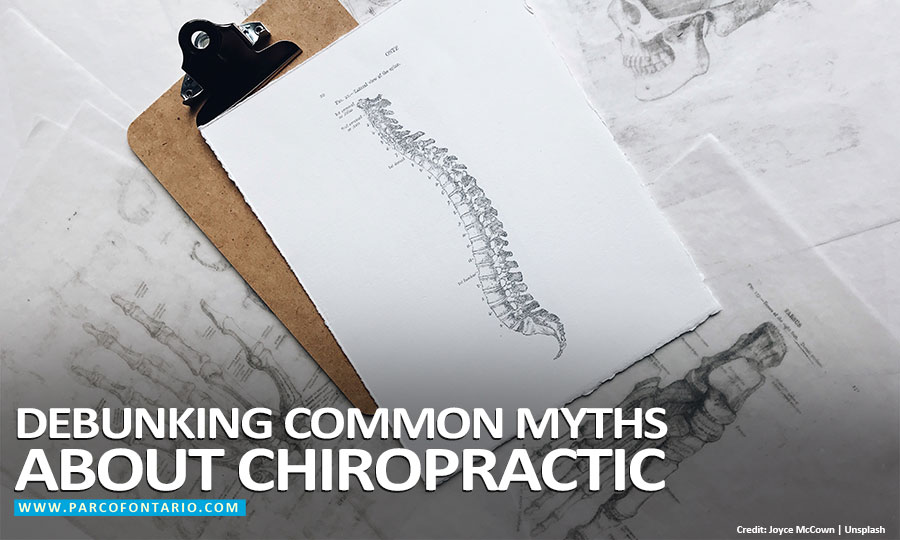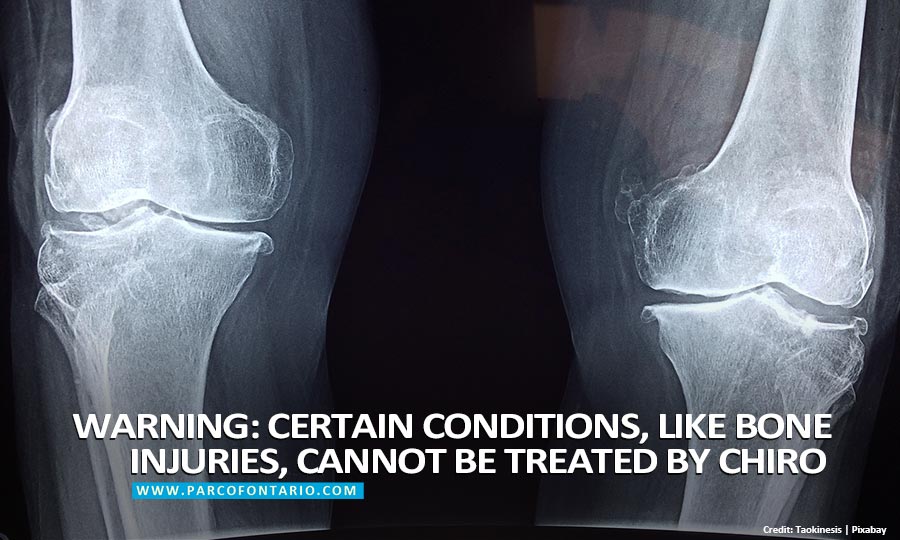Debunking Common Myths About Chiropractic

When your top Google search result for “what is chiropractic” bears the phrase, “pseudoscientific complementary and alternative medicine”, we understand why you may be a little hesitant to give it a try. However, statistics show that the practice of spinal manipulation to treat chronic pain in the musculoskeletal regions of the body is nowhere near mere quackery.
In Canada alone, 7.3 million suffer from chronic pain, mostly in the back, with 2 out of 3 people reporting moderate to severe pain. Around 16% of adult Canadians have paid a visit to a chiropractic facility to address their back and neck issues.
On top of that, a growing number of studies and research shows that chiropractic continues to be a viable means to ease chronic back pain and other related problems. Hands-on spinal adjustments performed by a chiropractor help facilitate natural self-healing by aligning the body’s musculoskeletal structure.
How chiropractic works does not have to remain a mystery. To know more about chiro, learn the truth debunking the most 6 common myths about the practice to assuage any doubts about having your back (and other body parts) cracked.
Myth # 1: Chiropractors are not real doctors

Chiropractic is a regulated profession in Canada and is governed by provincially-legislated regulatory and licencing authorities. In Ontario, the College of Chiropractors in Ontario (CCO) ensures that chiropractic applicants working within the province meet registration requirements, and issues certificates of registration to those who pass.
To date, there are more than 9,000 licensed chiropractors in Canada. All of them had undergone rigorous academic and practical training before they were granted the license to practice. The licence acquisition process involves fulfilling national standardized educational requirements and passing a licencing examination (by province) to become a Doctor of Chiropractic (DC).
All chiropractors in all provinces of Canada are primary contact providers. This means that you can go to them directly for a diagnosis and subsequent treatment, once you suspect you have a condition that can be addressed by a chiropractor.
Myth # 2: Chiropractors treat nothing but your back

While mainly a recommended treatment for acute or chronic back pain (sprains and strains), chiropractic adjustments can provide a wide range of benefits. When done with physiotherapy and scientifically proven alternative medicine, chiropractic treatment can help a patient recuperate faster from an injury or condition in their joints, bones, muscles, and connective tissues such as cartilage, ligaments, and tendons.
It can also be useful as a preventive measure against future health problems in your back such as herniated lumbar discs, sciatica, cervicogenic headaches, and other bone and soft tissue conditions.
Other problems that can be addressed by chiropractic care include:
While still heavily debated, there is strong proof that chiropractic benefits your immune system.
You are, however, highly discouraged from considering chiropractic treatment if you have broken bones, bone disease and infections, rheumatoid arthritis, asthma, blood circulation problems, and infections affecting your nervous system.
Myth # 3: It’s not safe for adults. Why should it be for kids?

Chiropractors are trained to handle everyone, from infants to the elderly. The spinal adjustments they do (the cracking and the popping) pose fewer risks and repercussions since it is a safe and low-risk natural procedure that aims to facilitate quick self-healing in your body. Compared to medications and surgery, there is less evidence on chiropractic treatment significantly altering parts of the human body, or worsening an already serious health condition.
There are admittedly some concerns about the connection between chiropractic neck adjustments and stroke, which is mostly due to aggressive neck manipulation. It is best to check with your primary care physician prior to consulting with a chiropractor for your neck problems.
Chiro has been proven safe among infants and children, and in some cases, it has been effective in lowering stress and anxiety, and managing and preventing neurodevelopmental disorders, such as ADHD, in children. Some chiropractic procedures prove to be a safer alternative for injury prevention or recovery among children who are active and engage in sports.
You should be vocal about your safety concerns to your chiro before going on a session, whether you’re the one going for treatment, or you’re the parent of a child who needs the treatment. Before even considering chiropractic treatment, you are advised to see your physician or your child’s pediatrician so you can explore your options.
Myth # 4: I cannot afford chiropractic treatment.
The average cost of an initial assessment by a chiropractor ranges between $88 to $150. You are also required by law to get a reassessment in the event you decide to change providers. Follow-up sessions may cost $50 to $150, depending on your agreement with your provider.
While it is evident that these prices don’t come cheap, the Canadian Chiropractic Association also continues to support initiatives to make the spine, muscle, and nervous system treatments affordable for everyone. If you have worries about spending for chiropractic treatment out of pocket, you can explore public funding (per province) and extended health care plans/benefits as other sources of funds for chiropractic care.
Myth # 5: No pain, no gain.

People always think the cracking sounds during chiro sessions indicate pain. But really, it’s just gas/air passing through the fluid in your joints. Yes, chiropractic adjustments will feel uncomfortable during the first session, but it gets easier, and your body will adjust to it eventually. Many people even find the sound and the feeling of their joints cracking oddly satisfying.
Your first time at the chiro may be a bit intimidating. It’s like getting your first massage, but instead of a masseuse, you have your chiro going over your pain points. They will ask you about your pain, and any medical conditions that you may have. Everything will be assessed and explained prior to the actual treatment session, so you are prepared for what comes. If there’s any pain after a session, it’s akin to post-workout or stretching strains.
Myth # 6: Once you get cracked, you have to go back. Forever.

Your relationship with your chiro is not a marriage; you are not in it for life. This myth was based on the notion that most chiropractic treatments require routine care. Understandably, a patient’s first visit shouldn’t be their last because most of the problems concerning back and neck pain, especially when chronic, often return, and do not dissolve in one go.
In the case of chiropractic treatment for injuries, the patient may be given a specific number of sessions for adjustments based on the severity of the injury, and how long it will take for the injured part to heal. Once healed, there is no need to go back.
How many times you decide to go back to your chiro for treatment depends on you. If you are keen on going through intensive treatment, your chiropractor will assess your condition and talk you through the process, creating a treatment plan made especially for you to follow.
At the Physiotherapy and Rehabilitation Centres of Ontario, what you say matters. Our licensed chiropractors and physiotherapists will work with you to come up with a treatment plan that suits you best. Call (905) 579-9938 to schedule an appointment today.









